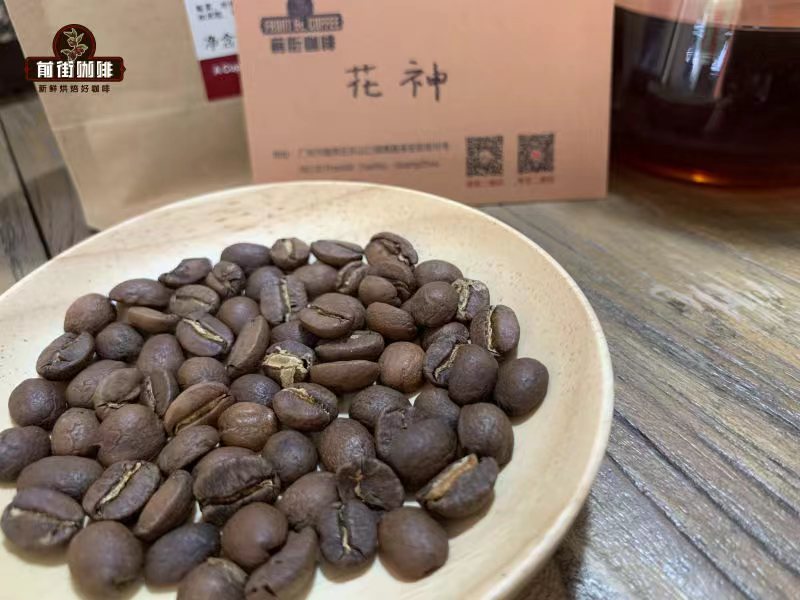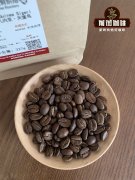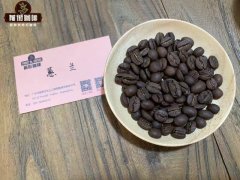Is the unique flavor and high price of animal dung coffee common to animal dung coffee?
Coffee lovers around the world like to exhaust all possibilities when trying to make the best coffee. And some of them do not like to be limited by the usual coffee processing methods when choosing coffee beans and want to involve the digestive system of animals.
Poop coffee is surrounded by hype and controversy. Although coffee beans are first eaten and defecated by these animals, coffee is safe to eat because of subsequent processing.
Kopi Luwak Kopi Luwak Coffee, which is very popular in Indonesia, is not the only kind of coffee that involves the digestive system of animals during processing, but also bat shit coffee, elephant shit coffee, bird shit coffee and Indonesian monkey shit coffee. Their main common features are their unique flavor characteristics and high prices.
Do all these animals digest beans? What's so special about these coffees and how do they taste? More importantly, are they worth the high price?
Coffee lovers around the world like to exhaust all possibilities when trying to make the best coffee. And some of them do not like to be limited by the usual coffee processing methods when choosing coffee beans and want to involve the digestive system of animals.

Poop coffee is surrounded by hype and controversy. Although coffee beans are first eaten and defecated by these animals, coffee is safe to eat because of subsequent processing.
You may have heard of Kopi Luwak coffee, which is very popular in Indonesia, but did you know that it is not the only coffee that involves the digestive system of animals during processing? There are bat shit coffee, elephant shit coffee, bird shit coffee and monkey shit coffee. Their main common features are their unique flavor characteristics and high prices.
Do all these animals digest beans? What's so special about these coffees and how do they taste? More importantly, are they worth the high price?
Digestive enzymes change the taste of coffee, reducing acidity and bitterness, resulting in a milder, more mellow and delicate taste.
These animals are very picky about coffee, choosing only the best, juicy and largest coffee cherries, which make up the best quality coffee beans. Natural selection.
Is it safe to drink poop coffee?
Although drinking coffee from animal droppings may not sound like the best idea, and you will think about pollution, drinking coffee from animal droppings is completely safe.
Even if the coffee cherry has been eaten and digested, the coffee bean itself will not be affected. In addition, there are many steps after collecting coffee beans from feces. They still need to be cleaned, dried, processed, baked at high temperature, and finally brewed in near-boiling water.
So by that time, all traces of feces and bacteria will have disappeared.
The world's most famous stern coffee is a coffee from the purchase of coconut cats in Indonesia, also known as civet coffee. This kind of coffee dates back to the 18th century, when the Dutch introduced the coffee harvest to Indonesia, and the coffee boom began to take place around the world.
The problem is that all coffee produced in Indonesia must be exported to Europe. In order to get coffee beans, locals must be creative and start collecting coffee beans that are digested (and excreted) by wild civets.
Although this coffee is still being produced, it is no longer out of need, but because of the widespread demand for the unique story of coffee production in the Western world.
The problem is that all coffee produced in Indonesia must be exported to Europe. In order to get coffee beans, locals must be creative and start collecting coffee beans that are digested (and excreted) by wild civets.
Although this coffee is still being produced, it is no longer out of need, but because of the widespread demand for the unique story of coffee production in the Western world.
Today, Kopi Luwak is one of the most expensive coffee in the world and one of the largest scenic spots in Bali, earning a lot of money from tourists. So, with the powerful story of coffee production, the Indonesians succeeded in turning feces into gold. They deserve praise.
How is it made?
Although it is hard to believe that anyone would bother to pick up coffee cherries from the feces of masked palm civet, a wild Asian palm, there is a reason for the uniqueness of this expensive coffee.
The first step in this unique coffee production took place when masked palm civet was eating coffee cherries. Masked palm civet is a picky eater who only chooses the best, largest and most mature coffee cherries. This means that when collecting coffee beans, Kopi Luwak is made from the best coffee beans, thanks to the careful selection of civets.
During digestion, the civet treats the skin and flesh of cherries, but the coffee beans remain intact during fermentation. After collecting Kopi Luwak, it will be harvested, washed, dried, sorted and baked before putting it into your cup.
What's that smell?
Even so, if you are interested in civet coffee and want to know its taste, you can expect it to be very smooth, nutty, earthy and without any bitterness.
Although it is considered to have excellent quality, some experts say its taste is below average and too simple, and that better boutique coffee can be obtained at a better price today.
Important Notice :
前街咖啡 FrontStreet Coffee has moved to new addredd:
FrontStreet Coffee Address: 315,Donghua East Road,GuangZhou
Tel:020 38364473
- Prev

Papua New Guinea Arabica Coffee Papua New Guinea Coffee is similar to Indonesian flavor
Papua New Guinea is a country in Oceania and the third largest island country on earth. It was ranked as the sixth fastest growing economy in 2011 and one of the most culturally diverse countries in the world. It is also one of the countries with the most rural areas in the world, so agriculture plays an important role in the country's economy; coffee has now become its highest source of foreign exchange earnings. Papua coffee
- Next

Is the content of chlorogenic acid in Yemen VS Malaysia white coffee higher than that in other coffee?
With the increasing popularity of boutique coffee, there are more and more interesting coffee drinks to choose from. However, it is sometimes difficult to keep up. Recently, I have been following some independent coffee circles and will see the word white coffee in the local coffee shop, calling it the coolest new product. But it seems that this coffee drink has as many definitions as coffee variants. With a simple term like white coffee, no wonder people
Related
- What brand of black coffee is the most authentic and delicious? what are the characteristics of the flavor of the authentic Rose Summer Black Coffee?
- Introduction to the principle and characteristics of the correct use of mocha pot A detailed course of mocha pot brewing coffee is described in five steps.
- Which is better, decaf or regular coffee? how is decaf made?
- How much is a bag of four cat coffee?
- How about four Cat Coffee or Nestle Coffee? why is it a cheap scam?
- Which is better, Yunnan four Cats Coffee or Nestle Coffee? How about cat coffee? is it a fake scam? why is it so cheap?
- How about Cat Coffee? what grade is a hoax? which instant coffee tastes better, four Cat Coffee, Nestle Coffee or G7 coffee?
- Process flow chart of coffee making-Starbucks coffee making process what coffee tastes good at Starbucks
- The top ten best coffee beans in the world Rose summer coffee or Tanzanian coffee tastes good
- Yunnan four cat coffee is good to drink?_four cat coffee is a big brand? four cat blue mountain coffee is fake?

